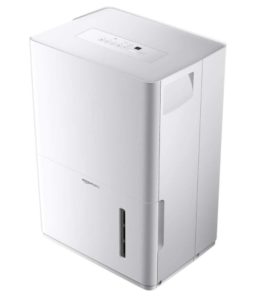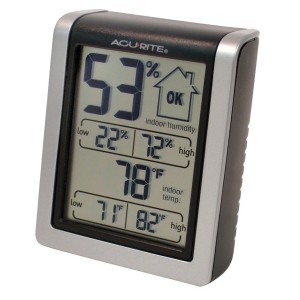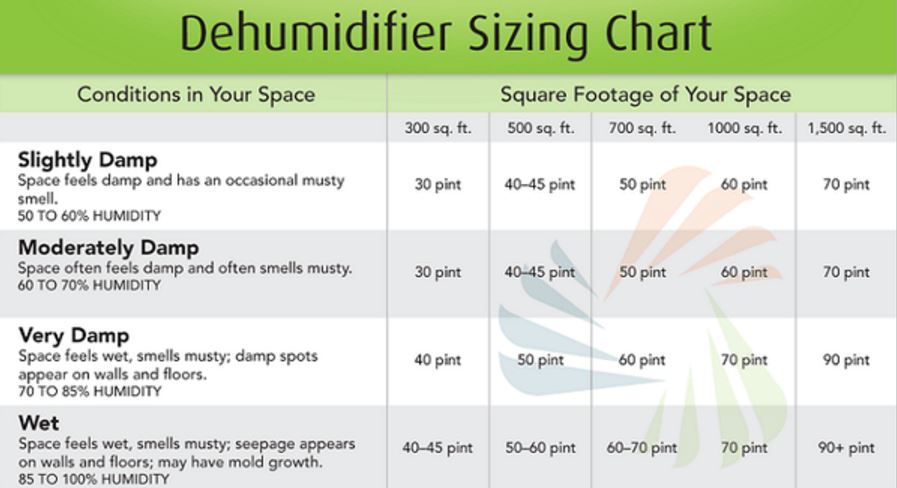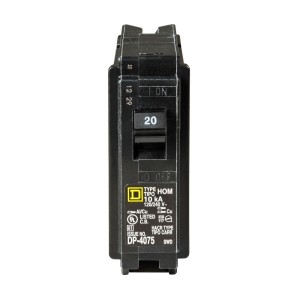Our 2016 Airstream 30-foot International Serenity comes with a manual entitled, “Recreation Vehicle Owner’s Guide to Moisture Management.” When an Airstream becomes too damp, it then becomes very hard to get rid of that damp. This moistness invades every part of the living space and saturates nearly every material in the trailer. Walls, wood, drapes, mattress, clothing, and even the adhesive holding together parts of your trailer, will become damp to the touch. Before you know it, mold and mildew will start to appear. I have made it my goal to reducing humidity. It is my ounce of prevention that is totally worth a ton of hurt, especially if mold and mildew set in because it will never go away.
Relative Humidity
I’m a meteorology fan, it happens to coincide with my plant and gardening geekery. The key here is to understand Relative humidity or RH for short. RH is the amount of water vapor present in air expressed as a percentage of the amount needed for saturation at the same temperature. If the water vapor content stays the same and the temperature drops, the relative humidity increases. If the water vapor content stays the same and the temperature rises, the relative humidity decreases. This is because colder air doesn’t require as much moisture to become saturated as warmer air. In simpler terms, this means you either have to remove moisture from the air and/or raise the temperature to reduce relative humidity.
According to the Moisture Management Manual, the Airstream should maintain a humidity rating of 60% or lower. A majority of mold species require a relative humidity of 70%. Maintaining relative humidity below 50% prevents dust mite infestations and inhibits bacteria, in addition to preventing mold and mildew growth. In colder climates, wintertime humidity levels must be even lower. A relativity of 30 to 40% will prevent condensation on windows and other surfaces, which by the way is my sweet spot.
I already own several digital thermometers and hygrometers (relative humidity gauge). This is a powerful tool to help you reduce internal moisture levels. My favorites are my AcuRite Temperature and Indoor Humidity Monitor and AcuRite Weather Station (this is a newer model, they don’t have my model anymore). They fairly accurate and easy to use.
Dehumidify and Heat
Here in Seattle, autumn and winter are the very wet & cold seasons, and average monthly rainfall can range from 4 inches to 6 inches. Naturally, if we were in a hot and humid environment running your Air Conditioning Unit will automatically dehumidify. For just the month of November in the great Pacific Northwest, rainfall measured at 7 inches already above the monthly norm, and we had two weeks to go before December. Because of this, I broke down and got a beefy yet portable dehumidifier: NewAir AD-250 25-Pint Portable Dehumidifier because it weighed 16 pounds and cost $160 — pint per dollar and pound per dollar, it was the best option. Unfortunately, they don’t make this model anymore, but I do suggest getting the AmazonBasics 22-Pint Dehumidifier, which costs around $160 – a great price especially with the Auto-Defrost, Sleep mode, and safety shut-off features, but is rather heavy at 33.1 pounds. I would say that the biggest drawback is that the NewAir is easy to tip over and doesn’t have a tilt-over safety shutoff protection, whereas the AmazonBasics does.

AmazonBasics Dehumidifier – For Areas Up to 1,000 Square Feet, 22-Pint, Energy Star Certified
Combined with a good space heater such as a Lasko 5307 Oscillating Ceramic Tower Heater or a Dyson AM05 Hot + Cool Fan Heater, you can bring down the relative humidity quite a bit. The RH in our trailer dropped from 70% to 35% after a few days of operation, even during a classic Seattle November wind and rainstorm. If propane is cheaper than electricity in your area, you could also run the furnace with a Dehumidifier
Now normally you could run the Airstream’s heating system (heat pump and furnace) with the air conditioner, but that requires a lot of electricity and it’s an option not recommended unless you are fully hooked up to 50 AMPs. That’s fine if you’re fully docked at an RV Park, but if you’re on a 115V or 110V outlet, you’ll trip a breaker after a few minutes of run time.
How to Select a Dehumidifier
Dehumidifiers are rated by pint-size. So when you see “30-Pint,” that means the machine is rated to remove 30 pints of moisture total per day. I’ll put it down in steps:
- Find the square foot area of your RV. Knowing the area of coverage will affect the size of your dehumidifier.
- Figure out what dampness level that you want to cover. The higher the dampness, the larger capacity size you’ll need.
- Use the Dehumidifier Sizing Cart below to find out the pint capacity you’ll need in a dehumidifier.
Managing Power Consumption
The heater-dehumidifier combo isn’t a perfect system. A space heater can pull anywhere from 1100 watts to 2000 watts of power – obviously drawing more power at higher temperature settings. A dehumidifier can draw as much as 200 watts. That’s a potential of 2200 watts. A standard household circuit breaker will hold 20 amps with a voltage rating of 120V. You can figure out your amp draw for each appliance by dividing the wattage by the voltage of the circuit. Total amp draw would be to add all the appliance amps together.
(appliance 1 watts / volts) + (appliance 2 watts / volts) + (appliance n watts / volts) = total amps
(2000 watts / 120 volts) + (200 watts / 120 volts) = 18.3 amps
So our total power draw is for just those two appliances is 18.3 amps! Just low enough on a standard 20 amp house circuit without tripping it. Run an additional appliance at any more than 200 watts and the circuit either in the trailer or the trailer’s source outlet trips and you are in the dark groping around for a flashlight.
Basic Practices for Humidity Reduction
I’ve also learned a few tips and tricks for keeping moisture down in our trailer, both from the Moisture Management Manual and from articles online:
1) Keep your RV or trailer well ventilated.
2) When you produce steam from cooking, cleaning, and washing, open a vent to create air circulation
3) Humans produce CO2 and H2O by just breathing, especially during sleep. If weather permits, open a nearby window by just a crack or more.
4) Refrain from drying clothing inside your trailer. Dry outside whenever possible.
5) Use appliances to help you reduce humidity and increase heat. I also use Damprid Refillable Moisture Absorber and DampRid Hanging Moisture Absorber, which are great for small enclosed spaces such as the closet or bathroom. They have the added bonus of keeping your clothes dry.
6) Refrain from drastic thermostat setbacks. I know it’s a common trick to set back your thermostat to a lower temperature while you are away and while you are asleep. Setting the temperature to 10 degrees or lower can reduce the indoor temperature too quickly and increase the chance of condensation on windows and cold surfaces, especially when the outside weather is colder.
7) Clean regularly, including all storage areas. Wipe down areas with a cloth slightly damp with cleaning solution. A simple and safe cleaning solution is 70% water and 30% white vinegar — this makes a great all-purpose cleaner that removes light mold and mildew stains. For something stronger yet still safe for the environment, mix 1 part oxygen bleach (OxyClean or Bio Kleen Oxygen Bleach Power) to 16 parts water (1 cup oxygen bleach to 1 gallon of water, or roughly 1 tablespoon of oxygen bleach to 1 cup of water). This mix will be safe enough for use on vinyl as well.
8) Care for the exterior of your trailer or RV. Wash and wax the exterior regularly to prevent water seepage. Inspect regularly for gaps, tears, punctures, and the condition of sealants. Some areas may need to be resealed as time goes on.
9) Be mindful of extreme environments. Prolonged use of a trailer in hot tropical zones or freezing locations such as mountains or winter conditions, will require extra care and maintenance.
10) Clean up messes quickly. Food and water spills, animal accidents, can lead to mold and bacterial growth if not quickly cleaned up and disinfected.
11) Addendum: I forgot to mention, insulating windows with thicker curtains and/or Double Reflective Insulation, to prevent radiant heat from escaping. Among the online RV community I’ve joined, this one is a pretty simple and cheap way of keeping the RV warm. I bought a big roll about two weeks ago, and we finally had time to install them this week. Hitch plans on making a more detailed post about it later.
Most of this I learned after three weeks of living in a trailer while mooch-docking in a friend’s driveway. Which, by the way, I’m rather thankful, that we’ve had this learning buffer while near family and friends instead of on the road. Then having lived in our Airstream for a whole year, I’ve learned a great deal more.
Author’s Note 11/3/2020: This post was originally published in October of 2015. I’ve made a few updates to reflect new things I’ve learned about humidity control in our Airstream.






6 Comments
Hey! What do you think about Eva-dry humidifiers?
I don’t have any personal experience with them, but based on looking at reviews on Amazon, they are quite decent and well liked.
Great write up! Thanks. Starting our second Fall for our 20′ Airstream Caravel, being stored out doors in sunny NW Washington.
I’m glad we could help! 🙂 Airstreaming in the PNW is a bit tricky but very much worth the extra love in maint. Safe travels and have fun out there!
Greetings Trail,
Two questions, Did you use the reflective insulation as an internal layer for curtains or was it applied to the windows directly? (i personally hate to cover or darken anything that might let any errant sunbeam in especially during those rare occurrences in the middle of a NW winter.
Second, and back to my fixation on solar power, can any of this be run efficiently off of solar or does it pull to much power? While i’m no electrical engineer I’m convinced much of the power source could, theoretically, be run off solar. I just don’t know that much about it but am learning.
oh…i lied, third question; who is the photographer because some of your pictures are truly magnificent. that’s not an iPhone i’m guessing.
Thanks and all the best,
Beanie
Hi Beanie, Thanks for visiting our site! We applied the reflective insulation between the bug screen and the curtains. I’m a lover of light, so I would prefer to have them easily gone as the weather gets better. The dehumidifier and heater can’t be powered off solar charged cells, it would drain the batteries in a few hours or less. In short, the methods here need at minimum 30 AMP hookup. Honestly, 50 AMP for best results when running either AC for hot and humid conditions, or Heater/Heat Pump and dehumidifier for cold and humid conditions.
As for my photographs, I use a Nikon D5500 with various lenses to take all my pictures. I’ve been a practicing amateur photographer for over a year now.
Hope that helps! and good luck!